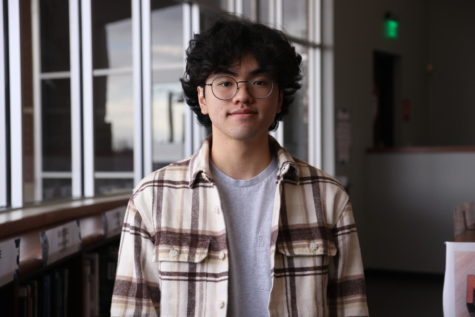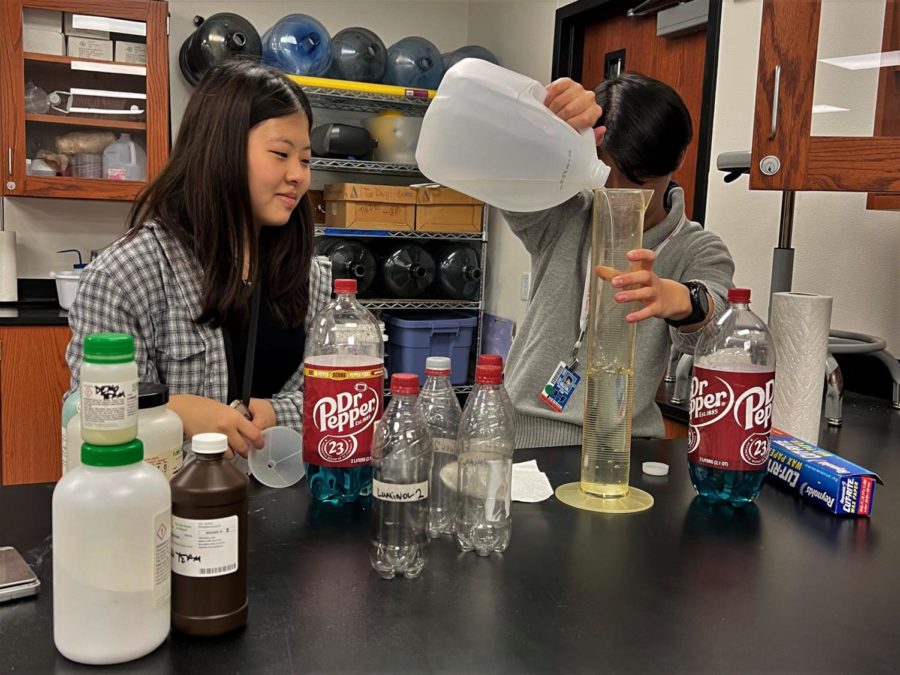SNHS to host science night Nov. 10 at Hebron Valley Elementary
Demo team leader Beomjun Kim and assistant leader Sarah Choi prepare chemicals in a science classroom for a prior demo show a few weeks ago. The team had its first performance of the year at the Fort Worth Museum of Science and History on Oct 22.
Science National Honor Society will hold its first science night of the year at Hebron Valley Elementary on Nov. 10.
Both visitors and children will be welcomed on the campus at 5 p.m. and all activities will conclude by 8 p.m. Throughout the event, classrooms and common areas will house experiment stations and science attractions that guests can interact with.
“When the [kids first arrive, the volunteers] will tie-dye [custom] name tags for them,” SNHS co-sponsor Kerri Boyd said. “There will be [stations] for physics concepts like Van de Graaff machines to chemistry [demonstrations], density bottles, bouncy balls and [more].”
The demo team will be present during the event to perform its lineup of science demonstrations on the campus’ cafeteria stage. Two shows will be performed at 6:15 p.m. and 7:15 p.m.
“Two weeks ago, we had the museum demo, [but were not allowed] to have demos with [open flames],” junior leader of the demo team Sydney Chen said. “For the science night, we will have those [additional fire demos] for a total of 15 tricks.”
SNHS sponsor Gale Hunt began and has since led the organization’s chapter for over eight years and said that the event will be the first one ever to be held at Hebron Valley Elementary.
“We wanted to reach out to the community,” Hunt said. “We want the young Hawks that are coming to Hebron or any high school to [develop] that love for science.”
Hunt said SNHS will also have another science night at a new location, Memorial Elementary School, in February of 2023, along with their 10th annual night for Castle Hills Elementary and 3rd for Polser Elementary.
“We have science nights just to keep an interest for science at a young age that hopefully carries through middle school and on to high school because we want more future STEM students – not only in K-12, but on into higher learning as well,” Boyd said.

Senior Henry Pham is the visuals editor and this is his second year on staff. He spends a lot of time gaming, munching on food, listening to jazz music...



